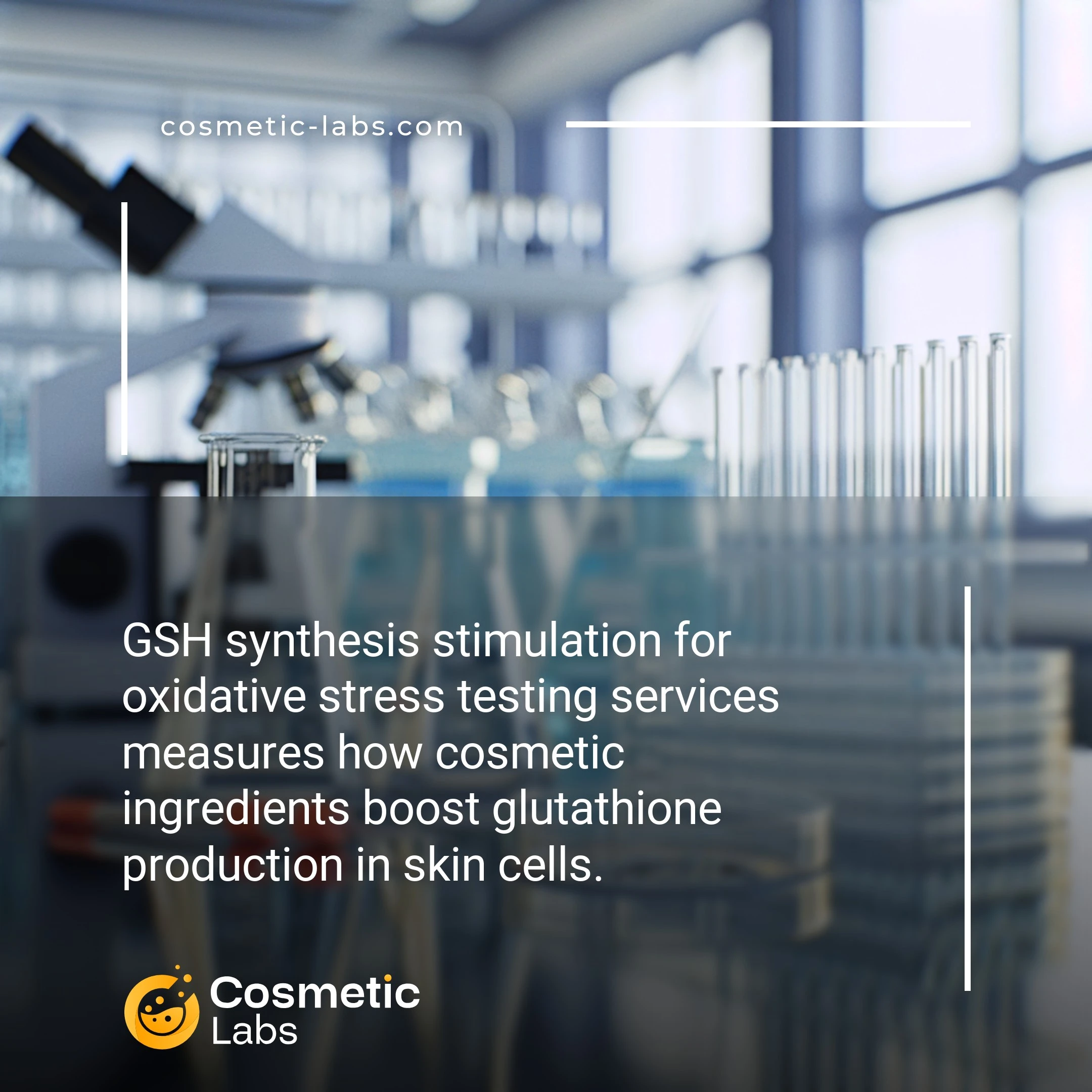GSH Synthesis Testing Services for Antioxidant Efficacy

What is GSH synthesis stimulation?
GSH synthesis stimulation testing for oxidative stress measures how cosmetic ingredients boost glutathione production in skin cells when exposed to environmental stressors like UV radiation or pollution. Labs use cell culture models to track antioxidant enzyme activity and cellular defense responses, providing quantifiable data on ingredient efficacy. This testing reveals whether active compounds can actually enhance skin’s natural protective mechanisms rather than just scavenging free radicals after damage occurs.
Why do you need this service?
Cosmetic labs use GSH synthesis stimulation testing to validate anti-aging serums and protective formulations before market launch. Teams measure how ingredients like vitamin C, niacinamide, and botanical extracts boost cellular glutathione production in skin models, providing quantifiable proof that your products actually defend against environmental damage and premature aging.
Who provides GSH synthesis stimulation services?
All cosmetic labs providing GSH synthesis stimulation services
There is no company providing these services at the moment.
GSH Synthesis Stimulation Testing for Antioxidant Efficacy
GSH synthesis stimulation testing measures how effectively your cosmetic ingredients boost glutathione production in skin cells. This specialized oxidative stress testing helps validate antioxidant claims and demonstrates your product’s ability to enhance the skin’s natural defense mechanisms.
Cellular Glutathione Production Analysis
Labs use cell culture models to measure glutathione levels before and after ingredient exposure. The testing typically involves keratinocytes or fibroblasts treated with your formulation over 24-72 hour periods.
Key measurements include:
- Baseline glutathione concentration
- Post-treatment GSH levels
- Percentage increase in cellular production
- Dose-response relationships
This data supports marketing claims about antioxidant protection and cellular repair enhancement.
Oxidative Stress Challenge Protocols
Testing labs combine GSH stimulation with oxidative stress induction to simulate real-world skin conditions. Cells receive controlled exposure to UV radiation, hydrogen peroxide, or other stressors alongside your ingredient.
The protocol measures:
- Glutathione depletion under stress conditions
- Recovery rates with ingredient treatment
- Protective effects against oxidative damage
Results demonstrate your product’s ability to maintain cellular antioxidant capacity under environmental stress. Connect with specialized labs on our platform to discuss GSH testing protocols for your specific formulation needs.
Applications of GSH Synthesis Stimulation Testing in Cosmetic Development
Brand owners rely on GSH synthesis stimulation testing for oxidative stress evaluation to validate antioxidant claims and demonstrate cellular protection mechanisms in their formulations.
Anti-Aging Product Validation
Labs measure glutathione synthesis rates in skin cell cultures treated with active ingredients like vitamin C, resveratrol, and peptide complexes. This testing reveals how formulations boost cellular antioxidant production at the molecular level. Quantified GSH increases provide concrete data for marketing claims about cellular repair and protection.
Testing protocols typically run 24-72 hours with multiple concentration points. Results show percentage increases in glutathione levels compared to untreated controls, giving brands measurable proof of antioxidant efficacy.
Protective Skincare Formulation Screening
Cosmetic labs use GSH synthesis assays to screen botanical extracts, marine ingredients, and synthetic antioxidants for protective formulations. The testing identifies which compounds most effectively trigger cellular defense mechanisms against environmental stressors. Labs often test ingredient combinations to find synergistic effects that maximize glutathione production.
This screening process helps formulators select the most potent protective ingredients before moving to clinical trials. Early-stage validation reduces development costs and accelerates time-to-market for protective skincare lines.
| Testing Parameter | Measurement Method | Typical Timeline | Key Output |
|---|---|---|---|
| GSH Synthesis Rate | Fluorometric assay | 24-48 hours | % increase vs control |
| Cellular Viability | MTT assay | 72 hours | Cell survival rate |
| Oxidative Damage | ROS detection | 6-24 hours | Reduction in oxidative markers |
| Gene Expression | qPCR analysis | 48-72 hours | Fold change in antioxidant genes |
Ready to validate your formulation’s antioxidant potential? Connect with specialized cosmetic labs on our platform to discuss GSH synthesis testing protocols tailored to your product development needs.
